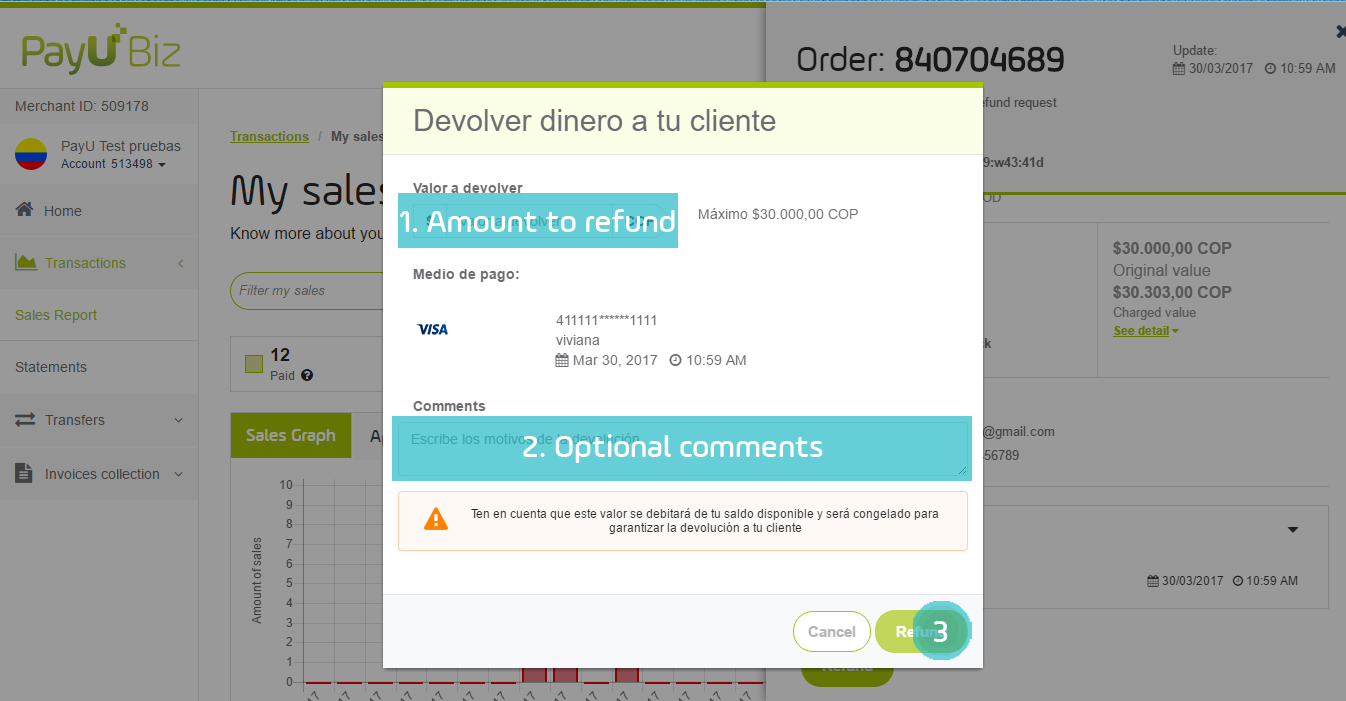Making a refund of a paid sale
When you need to make a refund from a paid sale, you first need to go to the 'Sales Report' label and find the specific sale you need.
First, click the 'Transactions' category in the left column menu, and select the 'Sales report' label.

Below the 'Sales Graph', you can see the list of your latest sales.

You can click anywhere in the row of any sale to open the order´s datasheet. A panel will appear from the right side, with the basic details of the sale. Click the 'Refund' button.

A pop up will appear asking you for specific information such as the amount to refund and the payment method. You can include comments in a box below. Click the 'Refund' button.
